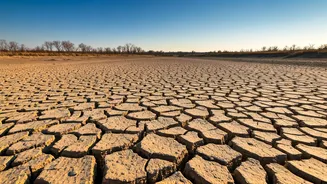A new report, the Germanwatch Global Climate Risk Index (CRI), starkly highlights India’s immense vulnerability, placing the nation ninth globally among countries most impacted by climate disasters over
the three-decade period spanning 1995 to 2024. This ranking underscores that India is one of the countries most affected by recurring extreme events, distinguishing it from those hit by rare, singular catastrophes.
The data reveals that the country has endured nearly 430 extreme weather events, resulting in the devastating loss of more than 80,000 lives and cumulative economic losses reaching an estimated $170 billion over the last thirty years.
The sheer scale of the disaster profile showcases India’s multi-faceted exposure to climate hazards. Major events like the 1999 Odisha Super Cyclone, the devastating 2013 Uttarakhand floods, and record-breaking heatwaves that claimed thousands of lives in years such as 1998, 2002, and 2015, contribute heavily to this grim toll. Storms and floods consistently account for a vast majority of the economic damage, with densely populated coastal areas and river basins facing existential threats. This recurring cycle of destruction means that recovery efforts barely keep pace with the onset of the next climate-driven shock, severely hindering sustainable development.
While India’s ranking has shown marginal improvement in some recent annual indices, the long-term data serves as a critical warning. The high human fatality count and massive economic losses, much of which remains uninsured, place an overwhelming fiscal burden directly onto the government and the most vulnerable communities.
The report frames this reality as an urgent call for accelerated climate action, emphasising the need for developed nations to fulfill their commitments regarding Loss and Damage finance, enabling countries like India to invest heavily in resilient infrastructure, advanced early warning systems, and robust adaptation strategies to protect its billion-plus population.















